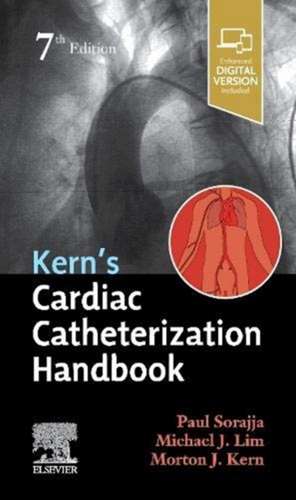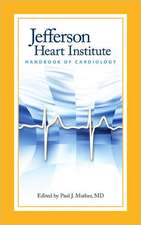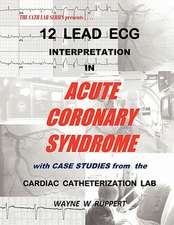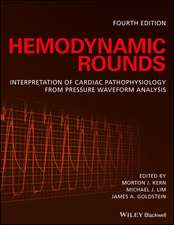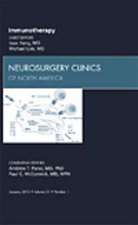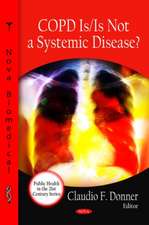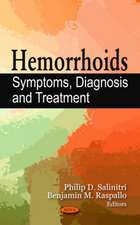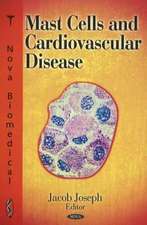Kern's Cardiac Catheterization Handbook
Autor Paul Sorajja, Michael J Lim, Morton J. Kernen Limba Engleză Paperback – 5 dec 2019
Preț: 353.72 lei
Preț vechi: 464.61 lei
-24% Nou
67.68€ • 70.67$ • 56.02£
Carte disponibilă
Livrare economică 07-21 martie
Livrare express 27 februarie-05 martie pentru 131.79 lei
Specificații
ISBN-10: 0323597734
Pagini: 736
Ilustrații: 325 illustrations (250 in full color)
Dimensiuni: 111 x 187 x 29 mm
Greutate: 0.7 kg
Ediția:7
Editura: Elsevier
Cuprins
Section I: Mitral disease Transcatheter repair 1. Uncomplicated transcatheter mitral valve repair with MitraClip 2. Commissural mitral regurgitation therapy 3. Advanced steering in the left atrium for an aortic hugger 4. Transcatheter repair of ruptured papillary muscle 5. Optimal intraprocedural guidance for mitral therapy 6. Challenges of transcatheter therapy for functional mitral regurgitation 7. The zip-and-clip technique in transcatheter mitral valve repair 8. Mitral annular calcification and transcatheter mitral valve repair 9. Optimization for multiple clip placement 10. Importance of hemodynamics for assessing residual regurgitation 11. Use of low profile pressure wire for simultaneous left atrial pressure during repair 12. Barlow's valve therapy 13. Transcatheter mitral repair for cardiogenic shock 14. A space too small for additional clipping 15. Treatment of leaflet perforation with vascular plugs 16. Occluder therapy for residual mitral regurgitation after transcatheter repair 17. Clip-to-annuloplasty ring 18. Transcatheter repair of severe mitral regurgitation after surgical annuloplasty 19. Unsuccessful transcatheter repair after prior cardiac surgery 20. MitraClip in a patient with radiation heart disease 21. A difficult case of transcatheter mitral valve repair 22. Stuck on the atrial septum 23. Ensuring mitral leaflet insertion 24. One of my most difficult transcatheter repair cases 25. Single leaflet device attachment and clip embolization 26. Lessons learned from a difficult MitraClip case 27. Percutaneous treatment of ventricular dysfunction and secondary mitral regurgitation (Accucinch) 28. Percutaneous annuloplasty for severe mitral regurgitation (MitraAlign) 29. Left ventricular therapy for mitral regurgitation (Myocor) 30. Coronary sinus approach for mitral regurgitation (Carillon) 31. Plugging a hole near a mitral surgical ring 32. Anatomical intelligence and image fusion for image guidance of transcatheter mitral valve repair Valve replacement 33. Computed tomography imaging for transcatheter mitral replacement 34. Retrograde transcatheter mitral valve replacement for mitral regurgitation (Twelve) 35. Retrograde transcatheter mitral valve replacement for mitral regurgitation (Tendyne) 36. Retrograde transcatheter mitral valve replacement for mitral regurgitation (Tiara) 37. Antegrade valve replacement in severe mitral annular calcification 38. Self expanding prosthesis for severe mitral annular calcification 39. Retrograde valve replacement in severe mitral annular calcification with a rail 40. Management of LVOT obstruction from mitral valve replacement 41. Transcatheter valve placement in a mitral ring Balloon commissurotomy 42. Hemodynamic assessment of mitral disease 43. Balloon mitral valvuloplasty for rheumatic mitral stenosis 44. Rupture of mitral valve with balloon mitral valvuloplasty 45. The banking technique for Inoue balloon movement
Section II Aortic valve disease Valve replacement 46. Caseous mitral annular calcification distorting the aortic annulus 47. Transfemoral balloon-expandable transcatheter aortic valve replacement (Sapien 3) 48. Double Valve Transcatheter Therapy for Mitral and Aortic Stenosis 49. Transvenous antegrade transcatheter aortic valve replacement 50. Valve embolization in transcatheter aortic valve replacement 51. Transcatheter aortic valve therapy for ascending aortic dissection with aortic regurgitation 52. Superior placement to overcome severe left ventricular outflow tract calcification 53. Retrieval of transaortic sheath marker loss 54. Left ventricular perforation during transcatheter aortic valve replacement 55. Subaortic ring therapy 56. Bicuspid aortic valve therapy - transcatheter challenges 57. Transcatheter aortic valve-in-valve therapy with high risk of coronary obstruction 58. A difficult case of transcatheter aortic valve replacement 59. Valve embolization during transcatheter aortic therapy 60. Transcaval transcatheter aortic valve replacement 61. Subclavian management during transcatheter aortic valve replacement 62. Rapid ventricular pacing and demise of left ventricular function 63. Pure aortic regurgitation treatment 64. Aortic regurgitation treatment in the presence of a left ventricular assist device 65. Prosthetic valve thrombosis 66. Fractures and twists during transcatheter aortic valve implantation 67. Transcatheter aortic valve therapy without pre-procedural computed tomography
Section III Prosthetic valve Paravalvular regurgitation 68. Computed tomography for paravalvular leak closure 69. Retrograde repair of aortic paravalvular regurgitation 70. Retrograde repair of mitral paravalvular regurgitation 71. Retrograde Repair of a Multi-Orifice Mitral Paravalvular Leak by Hopscotch Technique 72. Antegrade repair of mitral paravalvular regurgitation 73. Benefit of accurate transseptal puncture in paravalvular closure 74. Challenging echocardiographic imaging for leak closure 75. Coronary dissection from paravalvular leak closure 76. Treatment of Coronary Obstruction after Paravalvular Leak Closure 77. Papillary muscle rupture during paravalvular leak closure 78. Step up technique with coronary guidewire use for paravalvular leak closure 79. The anchor wire technique for aortic paravalvular leak closure 80. Venous-arterial rail and anchor 81. Simultaneous plug placement for paravalvular leaks 82. Closure of aorta to right ventricle fistula 83. The aortic-arterial rail technique 84. Repair of paravalvular regurgitation in a balloon-expanding prosthesis
Valve-in-valve 85. Mitral valve-in-valve therapy with an apical rail 86. Antegrade mitral valve-in-valve therapy 87. Bioprosthetic valve fracture at the time of valve-in-valve TAVR 88. Self-expanding prosthesis for aortic valve-in-valve 89. Small prosthesis therapy 90. Transcatheter valve-in-valve therapy for tricuspid disease 91. Complex self-expanding aortic valve therapy 92. A very difficult case of valve-in-valve therapy 93. Antegrade balloon-expandable valve for tricuspid valve-in-valve therapy 94. Complex tricuspid valve-in-valve therapy 95. Fusion imaging for apical access and mitral valve placement 96. Fusion Imaging for Mitral Valve-in-Valve Replacement 97. Challenging case of surgical mitral ring therapy
Section IV Cardiomyopathy Hypertrophic cardiomyopathy 98. Mitral valve abnormalities in hypertrophic cardiomyopathy 99. Closure of eccentric atrial septal defect" and place in congenital section 100. Reversed pulsus paradoxus 101. Percutaneous mitral valve repair in hypertrophic cardiomyopathy 102. Recurrent obstruction after percutaneous plication in hypertrophic cardiomyopathy 103. Complicated alcohol septal ablation 104. Untoward myocardial targeting with contrast during alcohol septal ablation 105. Case selection for alcohol septal ablation 106. Assessment of aortic stenosis in hypertrophic cardiomyopathy
Dilated cardiomyopathy 107. Volume reduction through infarct exclusion
Section V Congenital abnormalities, pseudoaneurysms, and shunts Patent ductus arteriosus 108. Closure of patent ductus arteriosus
Patent foramen ovale 109. Complicated patent foramen ovale closure 110. Techniques of ASD Closure with Deficient Rims 111. Closure of patent foramen ovale (Helex)
Coarctation of the aorta 112. Transcatheter open-cell stent implantation for treatment of native coarctation of the aorta
Ventricular septal defect 113. Transcatheter device closure of a post myocardial infarction ventricular septal defect 114. Gerbode therapy 115. Congenital muscular ventricular septal defect closure 116. Treatment of post-infarct ventricular septal defect 117. Patent foramen ovale closure from the right internal jugular vein
Pulmonary 118. Pulmonary homograft therapy 119. Treatment of a chicken wing left atrial appendage 120. Complicated left atrial appendage closure 121. Pearls from a case of left atrial appendage closure 122. Residual leak treatment after left atrial appendage closure
Pseudoaneurysm 123. Closure of multiple pseudoaneurysms in the ascending aorta 124. Apical pseudoaneurysm 125. Transventricular therapy of pulmonary homograft
Atrial shunt creation 126. Induction of left-to-right atrial shunting for heart failure (Corvia)
Section VI Tricuspid disease Tricuspid regurgitation 127. Transcatheter tricuspid valve annuloplasty with pledgets implantation for severe tricuspid regurgitation 128. Imaging for the tricuspid valve: tips and techniques 129. Tricuspid transcatheter repair 130. Transcatheter tricuspid valve repair with the FORMA Repair System 131. Transapical valve in tricuspid ring
Descriere
For portable, quick access to information needed at the point of care in today's cath lab, look no farther than Kern's Cardiac Catheterization Handbook, 7th Edition. This detailed, authoritative guide is ideal for cardiologists who need a quick clinical primer on cardiac catheterization, as well as for all members of the cardiac cath team. Highly readable and accessible, it helps you provide optimal patient care with reliable information on the latest diagnostic and treatment advances in this fast-paced field.
Notă biografică
Dr. Sorajja joined Allina Health Minneapolis Heart Institute - Minneapolis in 2013. He was previously a professor of medicine at Mayo Clinic before he left to join Minneapolis Heart Institute®. Dr. Sorajja is the author of over 100 published manuscripts and book chapters, and is a national speaker in the areas of valvular heart disease, hypertrophic cardiomyopathy and complex hemodynamics. Dr. Sorajja's special interest is structural heart interventions, such as transcatheter aortic replacement (TAVR), balloon valvuloplasty, paravalvular leak repair, percutaneous valve implantation, and other similar therapies.
